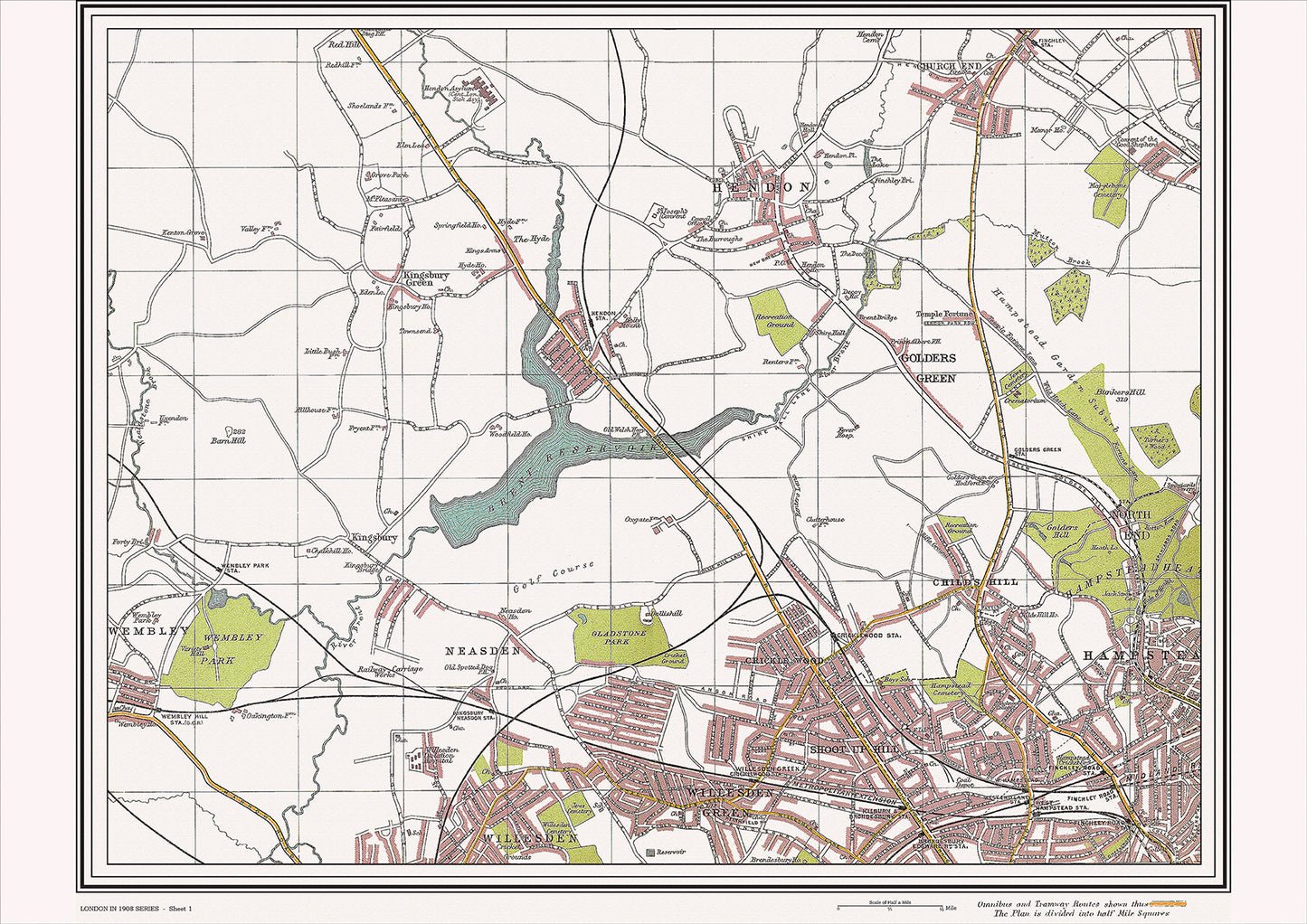Elite Wall Decor
London in 1908 Series - showing Hendon, Childs Hill area (Lon1908-01)
London in 1908 Series - showing Hendon, Childs Hill area (Lon1908-01)
Couldn't load pickup availability
This digital download is a high-quality 300dpi JPG image of a street atlas map dated 1908. It is enlarged, and sized to print if required at A2 dimensions (59.4 cm x 42 cm), making it perfect for framing or use in a project. Or simply view it in close up on your computer screen using Windows Photo or similar.
This series of 1908 maps of London shows (where present) roads, farms, public buildings (such as hospitals, libraries, town halls, churches, schools, colleges, museums, gas works, sewage works, etc.) , larger houses, woods, rivers, estates and parks. They also show footpaths, ponds and lakes.
These maps are sharp and clear. All railway lines and stations are shown and named.
Hendon and Childs Hill, located in the north-west part of London, were primarily rural areas in 1908, but they had a few notable historical places of interest. The area was dotted with large estates and manor houses, many of which were owned by wealthy families, including the Hendon Hall, which was built in the 18th century and served as a private residence until it was converted into a hotel in the early 20th century.
One of the most prominent historical landmarks in the area was the St. Mary's Church, located in the heart of Hendon. The church, which dates back to the 13th century, had a rich history and was considered a significant part of the local community. The church was known for its stunning architecture, including its impressive spire, and was a popular destination for visitors and locals alike.
Another historical site of interest in the area was the Welsh Harp Reservoir, which was a popular spot for fishing and boating. The reservoir was named after the Welsh harp, a musical instrument, which was said to resemble the shape of the lake.
Transportation in the area was mainly provided by horse-drawn vehicles, such as carriages and carts, although the London Underground had recently extended its services to Hendon Central in 1907, which made travel to central London easier and more convenient.
In terms of industry, there were a few factories and workshops in the area, including a brickworks and a silk printing works, which provided employment for local residents.
Overall, Hendon and Childs Hill in 1908 were characterized by their rural charm and peaceful way of life, despite being located within easy reach of London's bustling city center. The area's historical landmarks, including St. Mary's Church and the Welsh Harp Reservoir, added to its cultural significance and made it a popular destination for visitors and locals alike.
Whether you're a history buff, a cartography enthusiast, or simply looking for a unique piece of decor for your home or office, this map is sure to delight. It's a piece of history that you can own and enjoy for years to come.

